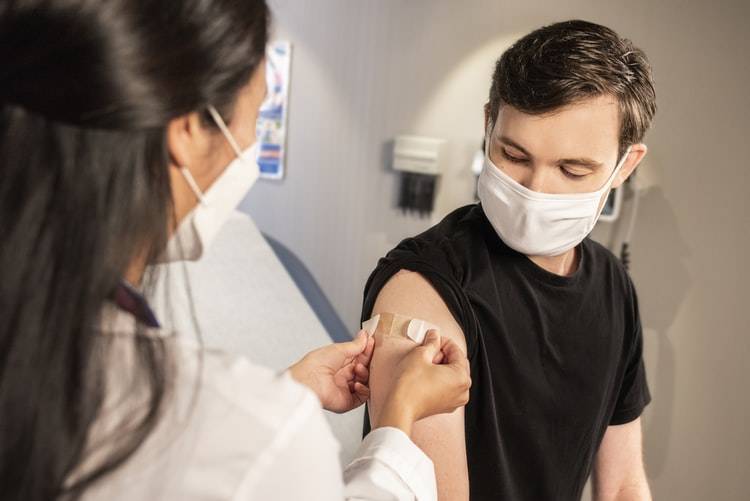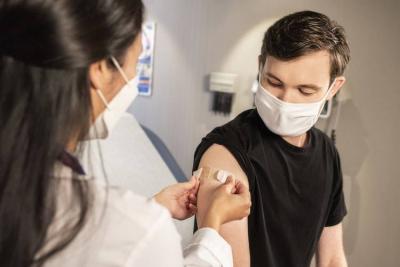The "COVAX" program, overseen by the World Health Organization, the United Nations, and the Vaccine Alliance, has failed to distribute the promised doses, resulting in 87% of vaccinated individuals worldwide being from wealthy countries, while the vaccination rate in the least developed nations is less than 0.2%. Although it has distributed 40 million vaccine doses to more than 100 countries so far, it remains far from its goal of distributing 2.5 billion doses this year. Additionally, it has not been able to start vaccination campaigns in 220 countries during the first three months of this year. Experts within the program acknowledge that, alongside the blatant injustice in the distribution of available vaccines, there are large quantities of surplus doses from rich countries that could be allocated to poorer nations. The alliance secured $14 billion in funding for its various activities upon its establishment early last year. After a year of operations and assessing its resource needs, it was found to face a shortfall of $19 billion by the end of this year.
**Formation of the Alliance**
When the AIDS epidemic swept the world in the early 1980s, poor countries waited more than a decade for antiviral treatments, during which the epidemic ravaged hundreds of thousands of their citizens. When the COVID-19 pandemic emerged early last year, concerns arose in scientific circles about repeating the same grave mistake and seeing a wider recurrence of the same scene. Nine international health organizations came together to form a charitable coalition called the "ACT-Accelerator", aimed at developing diagnostic tools, effective medicines, and vaccines, and distributing them equitably between poor and rich countries.
Today, we know that the coronavirus has caused over 3 million deaths and infected at least 150 million people, based on official numbers that experts agree are far below the actual figures. The pandemic has pushed over 100 million people into poverty, and the global economy has lost $9 trillion. So, did the alliance achieve the goals for which it was established? Françoise Vanni, Director of External Relations at the Global Fund to Fight AIDS, Tuberculosis, and Malaria, one of the organizations within the alliance, states: "I believe the situation could have been much worse than it is today. Last year, we knew nothing about this virus, there were no mechanisms for collective action, and there were no effective vaccines or medicines. We’ve made significant progress, but political and commercial interests have hindered more unified efforts to achieve the set objectives."
This alliance operates on three pillars: diagnosis, treatment, and vaccination. Each is managed by several international organizations, including the World Health Organization, UNICEF, and the Bill and Melinda Gates Foundation. In a forthcoming report on the fund's activities and implications, which "Asharq Al-Awsat" has reviewed, achievements of the alliance and what it has yet to accomplish are presented.
Sergio Carmona, General Director of the Foundation for Innovative Diagnostic Tools, noted: "In the early weeks of the pandemic, markets for acquiring these essential tools were in total collapse, resembling a battleground between rich countries that could purchase them and those that could not. There was a need for a framework for cooperation among countries. The alliance then formed, helping to provide 120 million rapid tests to poor countries, in addition to 32 million PCR tests, and specialized COVID-19 training sessions benefitting 23,000 nurses and doctors in 200 countries."
**Dexamethasone Treatment**
However, the World Health Organization's goal for this year is to provide 900 million rapid tests to developing countries, most of which still lack this essential tool, which is the first step in combating the pandemic. The international organization estimates that every rapid test in developing countries today corresponds to 80 tests in wealthy ones. Epidemiologist Rebecca Monte noted, "Poor countries are facing the pandemic as if they are blindfolded; they do not know who is infected or if there are new variants. This is a global health issue because not knowing what is happening in one country is like not knowing what is happening in the world."
Vanni summarizes this year’s fight against COVID-19 with one priority: equity in resource distribution. She states, "While I can go to the pharmacy here in Geneva and get 5 rapid tests for free every month, only 11% of the population in poor countries has received these tests."
On the treatment front, the alliance provided 2.9 million doses of Dexamethasone, the only medication approved for use by the World Health Organization, and conducted dozens of research studies in 47 countries, encompassing 85,000 cases. However, the biggest challenge remains finding a definitive treatment for COVID-19. Diplomatic efforts by the alliance have facilitated the participation of 190 countries in the COVAX program. Recently, another pillar has been added to the alliance's focus, specifically on basic health systems for effectively utilizing these diagnostic and therapeutic tools. Health systems rely on medical, emergency, and social care personnel, as well as laboratories and supply chains, and pandemic surveillance systems that were not given adequate attention in the early stages. This has been painfully evident in the current pandemic situation in India.




